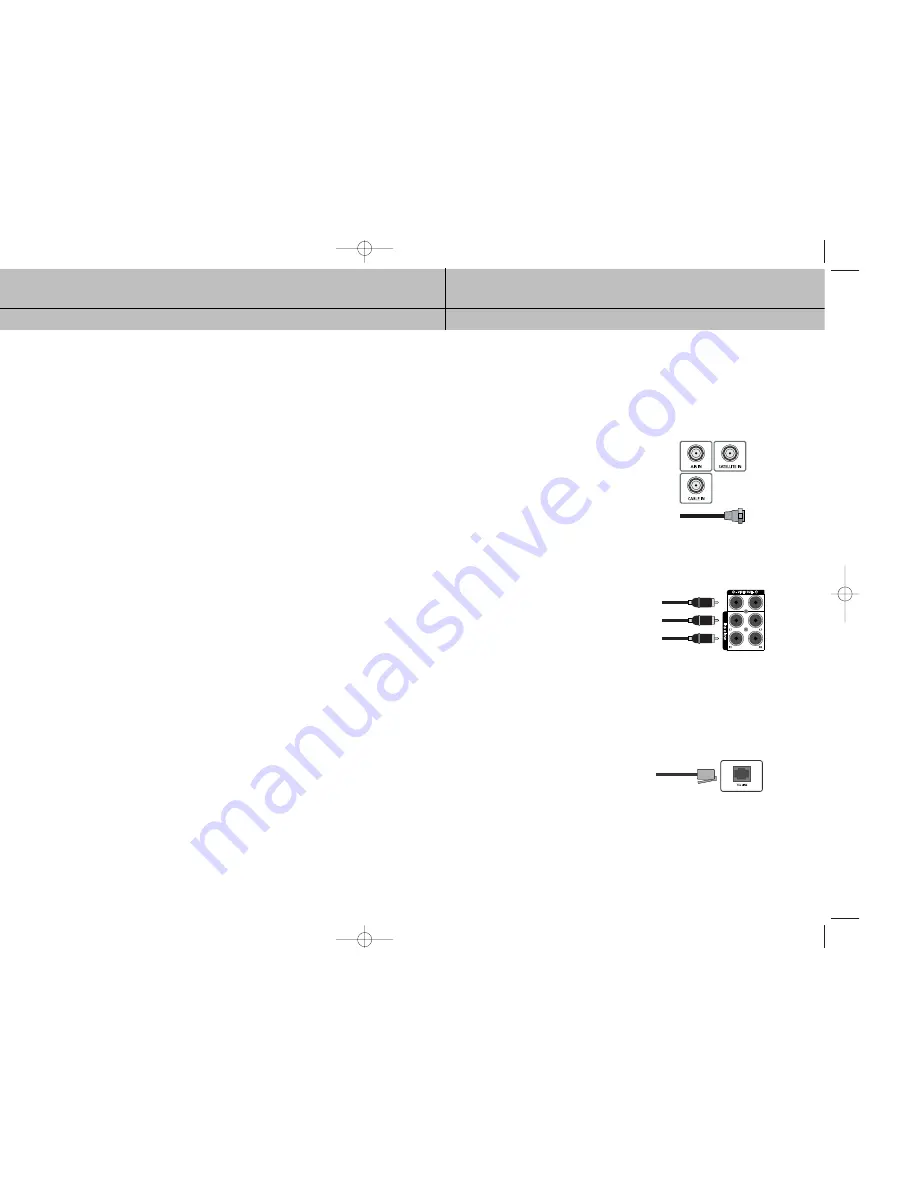
27
26
CHAPTER 3
Setting up and connecting
3
3
CHAPTER 3
Setting up and connecting
3
3
Chapter 3: Setting up and connecting
This chapter explains how to setup and start using your DIRECTV
®
HD Receiver.
Contents include:
Before making connections
Jacks and cables
Connecting your DIRECTV
®
HD Receiver
Connecting the VCR control cable
Turning on the DIRECTV
®
HD Receiver for the first time
Adjusting the satellite dish
Testing your DIRECTV
®
HD Receiver
Setting up local networks
Programming local channels
Activating your DIRECTV account
Upgrades
Before making connections
The next step is to make the necessary connections.
Before you begin, please note the following important safety and setup tips.
Protect your components from power surges
Always turn off and unplug your DIRECTV
®
HD Receiver, TV, and any other components before connecting or
disconnecting any of the cables.
Position all cables correctly to avoid audio hum or interference
After connecting the components, please run the audio/video cables along the side of the TV set, rather than straight down
the back of the TV.
Make sure that all cables are plugged or screwed tightly into their jacks.
Please make sure that all antennas and cables are properly grounded.
Whenever possible, route audio and video cables away from power cords.
Protect your components from overheating
Do not block ventilation holes in the top of the DIRECTV
®
HD Receiver, or any other components.
Make sure to position the components so that air can circulate freely.
If you are positioning the components in a stand or rack, make sure to allow for proper ventilation.
Do not stack components.
If you have a stereo amplifier or receiver as a system component, please place it on the top shelf or top rack so that
hot air rising from it will not flow around other components.
Make strong connections
Make sure you securely connect cables when making connections. When a tight fit makes a secure connection difficult,
you can sometimes make it easier by gently twisting the cable-end while pushing it onto the jack. (Important: never twist
S-Video or Optical Digital Audio cables — they have specially shaped ends that must be correctly oriented before connecting.)
Avoid cable damage
Never kink, bend, or twist optical digital audio cables; doing so might break the fragile optical fibers they contain,
rendering them unable to carry a signal.
Jacks and cables
The illustrations in this section show the various types of jacks and cables used to connect
your DIRECTV
®
HD Receiver.
ANTENNA terminals (cable not included)
Use AIR IN and CABLE IN terminals to receive a signal
from VHF/UHF antennas or your cable system using an
RG-6 coaxial cable, SATELLITE IN terminals can be used
to connect Satellite dish input.
Audio/Video out jacks and cables (RCA-type)
Use these jacks and cables to connect your receiver
to a TV, VCR, or to other components such as a stereo
receiver or amplifier. The Video out jacks provide a
basic quality composite video signal using RCA-type
cables. Audio jacks can be used to connect the
DIRECTV
®
HD Receiver to an A/V receiver.
The audio/video jacks on the back of the receiver
and the audio/video cable connectors are color coded
(yellow for video, red for right audio, and white for
left audio).
Telephone jack and cord
The TEL LINE jack and the included telephone cord
connect your DIRECTV
®
HD Receiver to a phone line.
If your home does not have RJ-11 type phone jacks,
please contact your phone company to get one installed.
A continuous land-based phone line connection is
required for DIRECTV
®
Pay Per View functionality and
DIRECTV subscriptions. Any calls generated by the
DIRECTV
®
HD Receiver are toll-free.
These calls are typically made in the middle of the night;
your phone is in use for approximately 30 seconds.
SIR-TS360-CHAPTER 3 12/15/03 11:56 AM Page 26












































